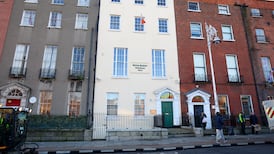The reduction in the speed limit from 50km/h to 30km/h in Dublin city centre almost eight years ago has failed to reduce traffic speeds, Dublin City Council has concluded.
Despite this, the council is to consider proposals to expand the area covered by the 30km/h limit.
The council lowered speed limits for most of the shopping and central business area of the city from 50km/h to 30km/h in 2006.
In January 2010 it extended the zone from Bolton Street on the north side to St Stephen’s Green on the south side, and from Church Street in the west to Gardiner Street and Dawson Street to the east.
O’Connell Street, Dame Street and the north and south quays, previously excluded from the zone, were also brought under the new limit.
The expansion of the limit was met with opposition from motorists and the AA, and later that year the zone was revised to exclude certain streets where motorists were ignoring the limit and continuing to drive at speeds of up to 50km/h.
Councillors voted to restore the 50km/h limit on Winetavern Street and the city quays west of Grattan Bridge at Capel Street, excluding a small, narrow section of Essex Quay up to the pedestrian lights before the Civic Offices.
Speed measurements
The lower limit had been introduced in the interests of road safety and to make the city centre more attractive for pedestrians and cyclists.
However, senior executive engineer with the council Niall Gormley said recent speed measurements showed the 30km/h limit "has not brought about any reduction in traffic speeds".
There was not yet sufficient data on traffic collisions since the introduction of the limit to determine whether it had had any impact on the number and severity of collisions, Mr Gormley said.
However, he will next week bring a report to councillors on the expansion of the limit to make it the “default urban speed limit” in residential streets. The area outside the current zone is primarily residential.
The 30km/h limit has already been applied in a large number of British and European cities, and has mainly been in residential and shopping areas and not main traffic routes, he said. A selection process that includes public consultation would be the most important part of developing such zones, he said.
Separately, the council is considering a proposal to create a pedestrian boulevard and eliminate parking from the city quays.










